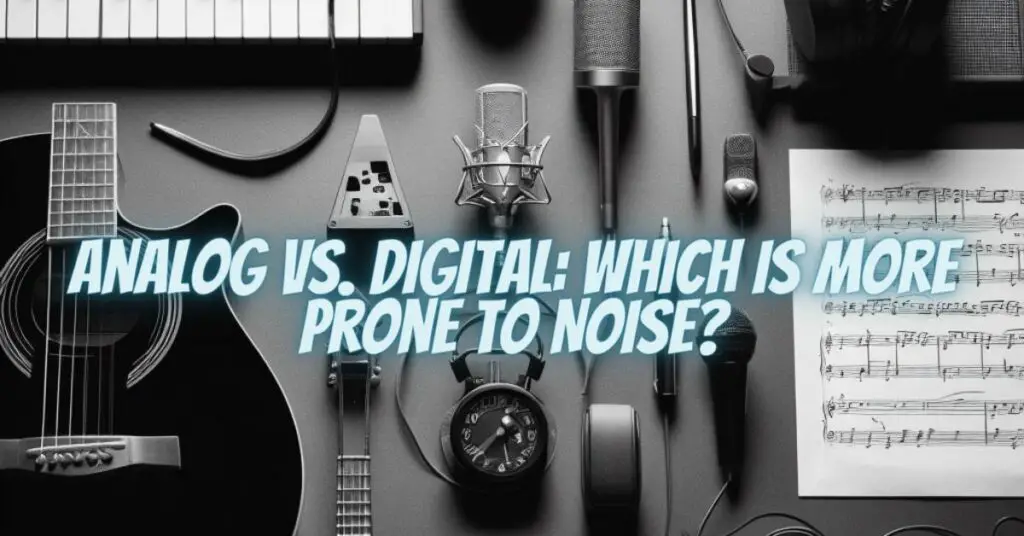The ongoing debate between analog and digital audio technologies has long been a subject of interest among audiophiles, music producers, and sound engineers. One aspect of this debate centers around noise. Is analog audio inherently noisier than digital, or is it the other way around? In this article, we’ll explore the concept of noise in both analog and digital audio systems, understand the differences, and discuss the advantages and disadvantages of each.
Analog Noise: The Vintage Character
Analog audio technology has a unique charm that many enthusiasts find appealing. Analog systems, which include vinyl records, analog tape, and tube amplifiers, often introduce a warm, organic, and characteristic noise that some listeners adore. This noise, often referred to as “analog noise,” encompasses various forms, including:
- Hiss: Analog tape and tube amplifiers can introduce a subtle hiss, which some consider a natural part of the audio experience. This hiss can be akin to the comforting background noise you might hear in a vintage recording.
- Crackles and Pops: Vinyl records, in particular, are notorious for their clicks, pops, and crackles. These imperfections are often embraced as part of the nostalgia and authenticity of analog sound.
- Tape Noise: Analog tape, such as cassette tapes and reel-to-reel, can introduce tape noise, which can be heard as a gentle, constant background hum.
Digital Noise: The Quest for Purity
In the realm of digital audio, the goal has always been to eliminate noise and imperfections, aiming for a pure, accurate representation of the original sound. However, digital systems are not entirely immune to noise:
- Quantization Noise: In digital audio, quantization noise is a result of the discrete nature of digital representation. When analog signals are converted to digital, some information can be lost, leading to quantization noise, which may manifest as a faint, low-level hiss.
- Jitter: Jitter in digital audio occurs when the timing of sample points fluctuates slightly. While this noise is usually imperceptible, in high-end audio systems, jitter can be a concern.
- Aliasing Noise: In some cases, digital audio can exhibit aliasing noise when signals exceed the Nyquist limit, causing unwanted artifacts in the audio signal.
Advantages and Disadvantages
- Analog Advantages:
- Character and Warmth: Analog noise can contribute to a warm and vintage character, appreciated by many.
- Tolerant to Overload: Analog systems tend to gracefully distort when pushed to their limits, whereas digital systems may clip abruptly.
- Analog Disadvantages:
- Limited Fidelity: Analog systems may have limitations in terms of frequency response, dynamic range, and signal-to-noise ratio.
- Maintenance: Analog equipment requires regular maintenance and can degrade over time.
- Digital Advantages:
- Pristine Clarity: Digital systems offer unparalleled clarity and fidelity in reproducing audio.
- Reliability: Digital media, such as CDs and digital files, are less susceptible to wear and tear.
- Digital Disadvantages:
- Clinical Sound: Some listeners find digital audio to be overly clinical, lacking the character and warmth of analog.
- Vulnerable to Clipping: Digital systems can clip abruptly when overloaded, leading to harsh distortion.
The question of which is noisier, analog or digital, ultimately depends on personal preference and the context in which audio is experienced. Analog systems introduce characteristic noise that some cherish as part of the experience, while digital systems aim for purity and accuracy. In the end, the choice between analog and digital should be based on your listening preferences, the type of music you enjoy, and your overall audio setup. Whether you appreciate the gentle hiss of vinyl or the pristine clarity of digital, both technologies offer unique listening experiences, and the debate between them continues to fuel the passion of audio enthusiasts worldwide.


